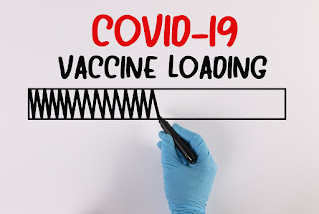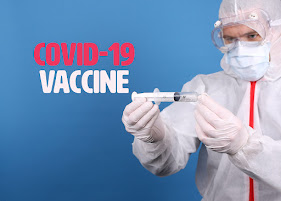What Worked For Sinovac To Enter WHO's EUL? Covaxin Yet To Open Its Doors!
In a recent development, the World Health Organisation gave it's approval to China's COVID vaccine Sinovac to be used under Public Health Emergency. But, sadly, Covaxin, which has been produced by India's manufacturing unit, Bharat Biotech, is still non-qualified to go, causing a hiccup for those who already have been fully vaccinated against COVID-19 and would not be able to travel internationally till it gets approved.
 |
At present, Covaxin is approved in just nine nations all over the world- Iran, Philippines, Mauritius, Mexico, Paraguay, Zimbabwe, Nepal, Guyana and India whereas Covishield (the Indian AstraZeneca) has been accepted widely across 130 countries.
A week back, Bharat Biotech had already sent its proposal to WHO and after its findings, it was learnt that only 90 percent of the documentation was complete and rest was yet to be assured and shared by the company. Till date, over two crores of people have been vaccinated in India so far. After pulling down the restrictions and giving a full-fledged validation by the international health watchdog, WHO, Covaxin could be provided to the countries in need without any doubt.
Two of the terms by the WHO- 'EUA & EUL' formed the most important criteria for the inclusion of the vaccines under the list of emergency vaccines.
As per WHO's diction-pedia, the straight definition of Emergency Use Authorisation (EUA) on it's website visually and technically appears as- 'A regulatory mechanism that gives validation for the use of vaccines and medicines to reduce the severity of life-threatening diseases that has been considered pandemic worldwide, whereas, Emergency Used Listing (EUL) can be defined as a risk-based procedure for the assessment and listing of the unlicensed vaccines, therapeutics and in-vitro diagnostics to help people affected by a Public Health Emergency worldwide.
EUA's precise assessment of laboratory and clinical trial data includes data-based quality, safety, production of protective antibodies and the efficiency of the vaccines or medicines is conducted to evaluate the risk-versus-benefit outcome with respect to the gravity of emergency across the world.
After a thorough examination and completion of all basic parameters, once the vaccine or the medicine meets out the standard emergency procedures, is provided a license for public health emergency use.
According to WHO listing criteria for EUL, four important focal points are meant to be met by the vaccine- a) The disease for which the product is intended is serious or immediate life-threatening or has the potential of causing an outbreak, epidemic, or pandemic and it is reasonable to consider the product for an EUL assessment; b) existing products have not been successful in eradicating the disease or preventing outbreaks; c) the product is manufactured in compliance with current Good Manufacturing Practices (GMP) and under a functional Quality Management System (QMS) in the case of in-vitro diagnostics; and d) the applicant undertakes to complete the development of the product (validation and verification) and apply for World Health Organisation pre-qualification once the product is licensed.
Moreover, there are other application requisites based on manufacturing quality data, labelling details, safety and efficiency of the vaccines that needs to be assessed thoroughly by the concerned department affiliated with the WHO.
China's Beijing-based pharmaceutical company's produce 'COVID vaccine-Sinovac' prevented symptomatic diseases up to 51 percent in those who were fully-vaccinated and foiled the severity of the COVID-19 virus and hospitalisation up to 100 percent in the subjects that were examined closely, as per the WHO's report. The Chinese vaccine met the international standards in criteria like safety, efficiency and manufacturing.
 |
Adults over the age of 18 and older are eligible to the vaccine. Because of the lack of sufficient clinical data for the people in the age group above 60, the real efficacy of the vaccine could not be estimated and hence, the WHO hasn't given its consent for that age group.
At present, only seven vaccines have earned their scores to be bracketed under EUL's inventory of public health emergency use- Pfizer/BioNTech; AstraZeneca-SKBio; Serum Institute of India (SII), AstraZenecaEU, Janssen; Moderna and Sinopharm.
India's Covaxin needs to earn it's vaccine efficacy proficiency in the eyes of the World Health Organisation in order to qualify all its fundamentals to be labeled as EUL.
By- Rashmi Singh
#COVID19 #Covaxin #Sinovac #Vaccination #COVIDPrevention #WHO #EUL #EUA #SAGE #PublicHealthEmergency
Technical terms | source- WHO


.jpg)
Comments
Post a Comment